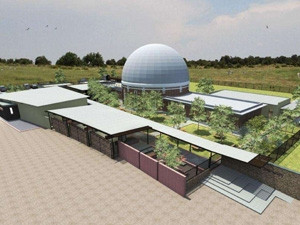
Sub-Saharan Africa's first digital planetarium will be opened on Naval Hill, in the Franklin nature reserve, in Bloemfontein, on Tuesday.
The planetarium is a joint venture between the Mangaung Metro Municipality (MMM), the Free State Department of Economic Development, Tourism and Environmental Affairs (DETEA), the University of the Free State (UFS) and the national Department of Science and Technology (DST).
The planetarium, which will be situated in the old Lamont-Hussey Observatory, is the first component of the municipality's proposed Centre for Earth and Space.
A key role player in the project, Dr Matie Hoffman, from the UFS department of physics, says the planetarium will provide opportunity for invaluable astronomical research and education.
According to Hoffman, the planetarium dome enables researchers to do a visual display of their findings. He explains scientists end up with a series of numbers when doing scientific measurements that need to be displayed visually in order to make a better sense of it.
Hoffman says an ordinary planetarium uses opto-mechanical projectors that give a realistic projection of the night sky on a planetarium dome. "These types of projectors cost millions of rands and can only do this one thing really well," says Hoffman. "A digital planetarium makes use of advanced digital data projectors that collectively display a full-dome video image with millions of pixels on the dome. It is a much more multipurpose facility in that it can be used for all types of sciences that use projections and not just astronomy."
Hoffman says the planetarium was also designed to be used for drama and theatre productions in an effort to make the project more sustainable.
The establishment of the planetarium cost about R13.5 million, says Hoffman. A long-term consignment of the building was given by MMM, while construction and equipment were largely funded by DETEA and DST. A few other smaller benefactors also came on board to cover costs.
Hoffman says more details surrounding the MMM Centre for Earth and Space are expected to be made public at the official unveiling next week, but revealed the centre will include an interactive science hall, sculpture garden, observation platform, coffee shop and possibly a facility for environmental education.
In addition to being an advanced research and training facility, the planetarium will boost tourism and economic development in the Free State, and make astronomy more accessible and exciting to the general public, says Hoffman.
Share